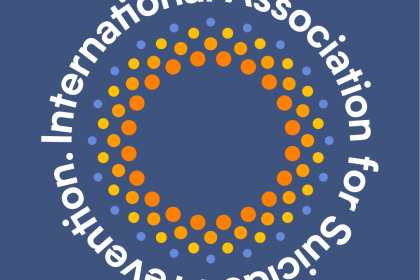CO-CHAIRS:
Intentional ingestion of pesticides is the most common means of suicide globally, accounting for an estimated 250,000 to 375,000 deaths each year. The easy accessibility of pesticides in agricultural communities of low- and middle-income countries and the limited health care services available in these communities results in a very high case-fatality for pesticide ingestion.
Rationale:
Intentional ingestion of pesticides is the most common means of suicide globally, accounting for an estimated 250,000 to 375,000 deaths each year. The easy accessibility of pesticides in agricultural communities of low- and middle-income countries and the limited health care services available in these communities results in a very high case-fatality for pesticide ingestion.
Several approaches have been proposed to reduce mortality from pesticide self-poisoning including restricting access to means through regulation; conversion to less toxic pesticides; development of single-use packaging; safe storage of pesticides; agricultural strategies and work with pesticide vendors; improving medical management; and communication and training initiatives. A number of projects are now underway to assess the effectiveness of a range of interventions aimed at reducing pesticide self-poisoning in China, India and Sri Lanka.
There have been a number of initiatives launched in the past few years aiming to reduce the number of deaths from pesticide ingestion including the WHO Special Initiative on Pesticides and Health and the Croplife Safe Use Initiative. The pesticide industry has supported a range of meetings and workshops on this issue in Singapore, Durban, Geneva, Brisbane and Beijing. Prevention of intentional pesticide poisoning is an issue of concern to many members of IASP and attendance at IASP workshops on the issue have been well supported.
For these reasons, IASP has developed a Special interest group with the following aim to prevent pesticide poisoning and promoting the development and use of evidence on restricting access to means, regulation, training, and improved medical management.
Specific objectives and activities:
- Collate evidence, knowledge and information on the prevention of intentional pesticide poisoning
- Facilitate collaboration between different projects currently underway
- Promote research and links between research projects
- Develop innovative research methodologies to evaluate different types of interventions
- Act as a focal point for the dissemination of information on the prevention of pesticide poisoning
- Identify potential funders that could support an IASP-supported multi-country project
- We are working on a newsletter and hope to publish our first newsletter in 2016.
In 2015 the Prevention of intentional pesticide poisoning group ran a workshop during the World Congress in Montreal. The focus of the presentation was on the significance of pesticide poisoning and progress on some of the prevention trials being undertaken.
A key objective of the group was to act as a focal point for the dissemination of information on intentional pesticide poisoning. Thus this year we have established a reference list of articles published in three key biomedical databases (Pubmed, EMBASE, and Social Sciences Citation Index). It currently contains 444 references.
The bibliography has been organized and provide members with access to references and abstracts. The references are organized in three groups; region, theme and study design. These groups have been created to assist searching and identification of relevant references.
General
There are 444 references in the bibliography. The bibliography is further divided into 3 groupings; regions, theme and study type. These groups have been created to assist searching and identification of relevant references.
Download the bibliography overview in PDF format
Region
| Categories | No. of Articles |
|---|---|
| Africa | 12 |
| Americas | 17 |
| Asia | 122 |
| Middle East | 25 |
| Other Regions | 19 |
Thematic
| Categories | Description | No. of Articles |
|---|---|---|
| Toxicology/Clinical/treatment | These articles are primarily focused on poisoning. They include case reports and guidance on toxicological aspects of diagnosis and treatment as well as experimental designs. | 235 |
| Overviews/Commentary | The articles provide an overview of either specific pesticide poisoning issues or specific regional/country issues. They may refer to other studies or describe the patterns across several districts/countries. | 39 |
| Epidemiological | These articles are studies of the distribution and determinants of conditions in specified populations. It is primarily descriptive studies with some experimental designs | 136 |
| Health services | This includes articles related to health management systems; admissions, transfers, discharges, utilisation or costs. | 16 |
| Policy | These articles are concerned with policy related to poisoning or suicide prevention. They focus on responses by government, researchers or industry and possible interventions | 18 |
| Prevention | The articles consider to some extent the prevention of poisoning. This includes primary data from studies of factors contributing to intentional poisoning or interventions and opinions about options for prevention drawn from experience. | 40 |
| Social Sciences | These articles examine a range of underlying factors contributing to intentional pesticide poisoning. They include qualitative and environmental health perspectives. | 9 |
| Suicide or Self Harm | These articles have some focus on describing suicide and self harm and may be primarily focused on pesticides as a method or include all methods. | 56 |
Study Types
| Experimental | RCT | Randomised control trials are used to test efficacy or effectiveness of interventions. The primary characteristic is that participants in the trial are randomly allocation to receive an intervention or treatment as usual. | 10 |
| Experimental | Systematic Review | Systematic review of trials; this includes abstracts related to systematic reviews in progress | 11 |
| Observational | Cohort | This is an observational study of a large group of people who share a similar characteristic – e.g. all poisoning admissions | 11 |
| Observational | Case Control | This is an observational study of two groups of people; one group of people with an outcome that is compared to a group without the outcome. It is primarily used to identify risk factors for diseases. | 5 |
| Observational | Case Series | Is a descriptive study that traces people who have had a certain exposure: e.g. all patients admitted with paraquat poisoning. | 40 |
| Observational | Descriptive | This includes studies that use routine data sources such as hospital records, census data, and data reported to poison units. It describes patterns in admissions, outcomes, methods and other epidemiological type variables. | 151 |
| Observational | Survey | This includes both community surveys and surveys carried out in hospital settings | 28 |
| Qualitative | Qualitative | These are studies that employ qualitative methods and use interviews or focus groups. | 6 |
| Opinion | Case Reports/ single case studies | These are primarily reports of single cases of poisoning focussing on clinical features | 90 |
| Opinion | Toxicological practice guidelines | These are articles that provide guidance to toxicologists on diagnosis, toxicological mechanisms and treatment regimes | 59 |
| Opinion | Expert Opinion | These are summary type articles that do not present practical research. Examples are non-systematic summaries of current evidence, presentation of arguments or debates or personal accounts related to experience. | 29 |
Study Design
Study Design – Experimental
Study Design – Opinion
Study Design – Qualitative
Topic
Topic – Epidemiology
Topic – Health Services
Topic – Overviews
Topic – Policy
Topic – Prevention
Topic – Social Sciences
Topic – Suicide and Self Harm
If you would like to join this SIG, please contact us.






